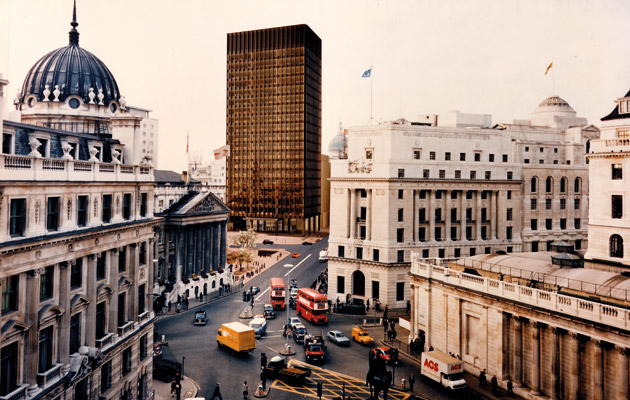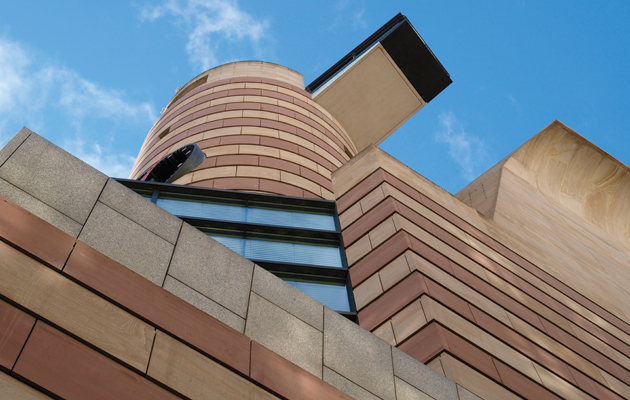|
Above: Mies van der Rohe’s unrealised Mansion House Square proposal |
||
|
Curator Marie Bak Mortensen discusses the two proposals for Mansion House in the City of London, and what the designs revealed about the architectural climate of their times It took Peter Palumbo four decades to redevelop the Mansion House site in the City of London. An exhibition at the RIBA in London, opening tomorrow (8 March), compares the two proposals: Mies van der Rohe’s unrealised Mansion House Square and its built successor, James Stirling’s recently listed No 1 Poultry. Curator Marie Bak Mortensen told us more. ICON Why you think the site has gained such an iconic place in London’s architectural history? MARIE BAK MORTENSEN It is not difficult to see why the two proposals would be met with a maelstrom of arguments, emotions and opinions. They are set against an impressive and complex backdrop of historic architecture that include the 17th century church of St. Stephen Walbrook by Sir Christopher Wren, the 18th century Mansion House by Charles Dance and the 20th century Midland Bank by Edwin Lutyens – buildings that are canonized within architecture history and the public. On a small footprint within the very heart of the City of London an all-star group of architects are representing the best of British architecture from different historical time periods. ICON Do you think London missed an opportunity when the Mies van der Rohe project was finally rejected? MBM We never intended the exhibition to make subjective conclusions, although we knew there was a particular appetite for a definitive answer to this question. Instead, we wished to present two architectural schemes, side by side, designed for the same site in London and from the same brief. For us, the interesting aspect is to trace the design and thought process of each creation and how this leads to two seemingly very different buildings. By better understanding the processes behind the design you can begin to impartially judge the validity and purpose of the schemes. But in this case, we shall leave it to the visitors to decide whether they prefer Mies van der Rohe’s high-modernist Mansion House Square scheme or the postmodern No. 1 Poultry. ICON What in particular would you say were the lessons or stories that can be teased out from the saga? MBM Both Mansion House Square and No. 1 Poultry faced protracted planning battles spanning three decades. The Mies scheme in particular fell victim to a widespread shift in the architectural climate in Britain, with a significant proportion of professionals and the public alike turning away from modernism, and heritage organisations mobilizing against demolition of historic buildings. The recent listing of No. 1 Poultry was successfully campaigned by the same interest groups who fought against its planning permission in the 1980s. The exhibition demonstrates how history repeats itself and different generations perceive and value architectural styles differently with the distance of time. The exhibition also draws parallels to other broader contemporary issues that are relevant to city planning today, such as the development of London’s skyline. The proposed 19-storey Mies building was in 1985 deemed too intrusive to the historically cohesive city centre of Mansion House. Yet today there are more than 230 high-rises – of over 20 storeys – being planned for London with new high-rise clusters being developed. ICON Do you feel the listing of No.1 Poultry bring this to a satisfactory conclusion? MBM It is worth remembering that No. 1 Poultry lead to the demolition of a group of grade-II listed Victorian buildings. The Mappin & Webb building occupied the corner site and was the building the conservationists most passionately fought to save. The listing of No. 1 Poultry will freeze the building for a moment in time, preventing structural changes to its existing design. But as the exhibition demonstrate, the architectural transformation of London, and cities in general, are ongoing and future planning policies will decide what is to remain and what should be demolished to make way for new architecture. Mies van der Rohe & James Stirling: Circling the Square, 8 March — 25 June RIBA, London |
Words John Jervis |
|
|
||
|
James Stirling’s No 1 Poultry was recently listed |
||




















